We’re pitting two of the biggest names in the shoe world against each other: Nike vs Adidas Running Shoes. Let’s compare specific models and features to help you find the best fit for your training and racing.
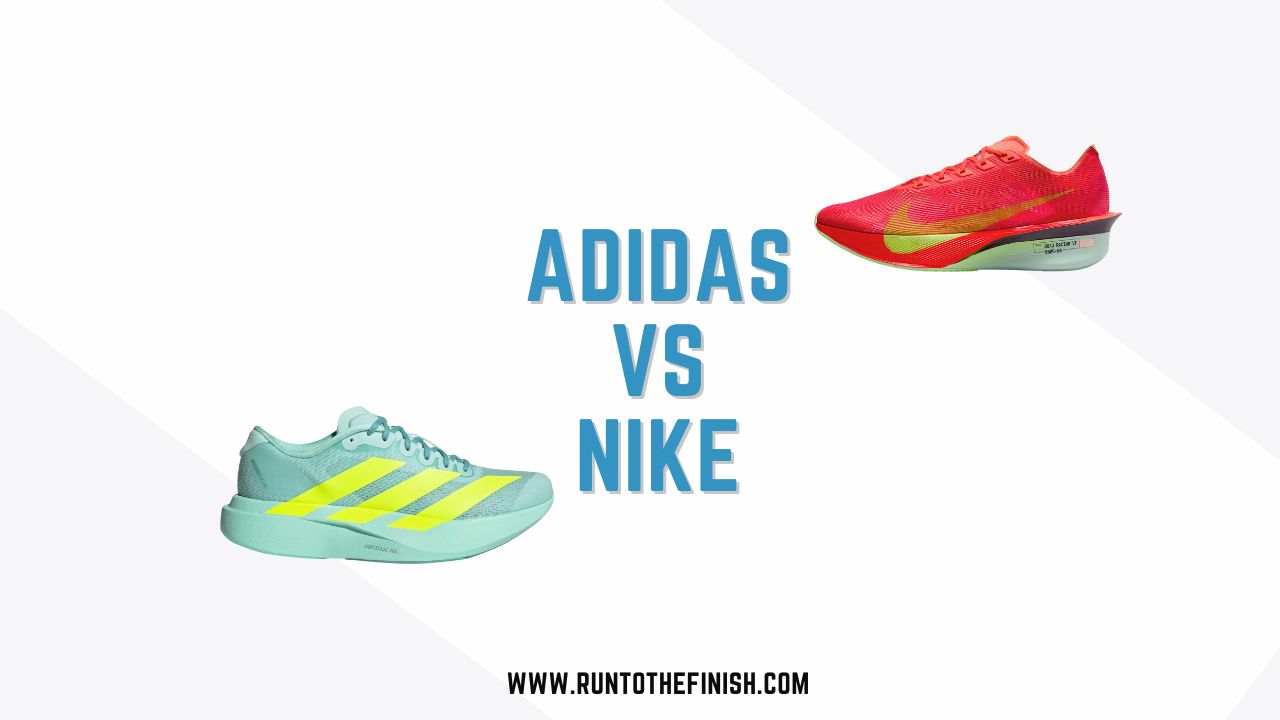
Perhaps, like me, you think of Adidas first for soccer or even fashion. But they’ve been a long time player in the running industry as well.
Both brands have things people love and things people dislike.
And like every running shoe brand they tend to have moments where they seem to be the dominant running shoe. This has a lot to do with marketing or getting lucky with a superstar athlete wearing their gear on a main stage performance (Olympics, NYC marathon, etc).
When it comes to these two brands, I think it’s key to know that both have continued to change an adapt. So if you’ve tried one previously without luck, you might need to be willing to test a new model.
Main Differences Adidas vs Nike
Nike and Adidas have a similar range of shoes, but a very different fit and feel. Maybe some of the difference is simply in the way that they market, which makes you feel differently about the gear.
We’ll break down the differences in more detail below, but here’s a quick overview:
Adidas Running Shoes
- Shoes tend to run true to size, not wide
- Huge line up of shoes can be confusing
- Frequently able to find good sales (hey that matters!)
- Shoes for a wide variety of sports
- Very well known for casual shoes and athletic wear
Nike Running Shoes
- More narrow fit, especially in the heel and midsole
- Tend to run smaller in width and length than many other brands
- A larger focus on newest and trendiest technology to “improve running economy”
- Known across a wide variety of sports and highly visible in competition
- Has a large brand loyal following
Nike Vs Adidas Running Shoe Models
Before we jump into the specifics, let’s look at their top models in each of the main categories. There’s no winner declared here because all are great shoes, it’s just about which one is best for your foot.
Did you notice I even said the brands in reverse order this time…seriously no favorites, I have run in both brands many different times over the years.
Quick note, I absolutely encourage you to checkout Nike’s return policy! It makes it much easier to test out a shoe and return if it doesn’t feel right.
Stability Running Shoe
👉Nike Structure 26
Nike has updated their line up and you’ll find that the Structure is their new series for stability shoes, replacing the Invincible line up. According to Nike, the Structure 26 is the go-to choice for runners seeking stability and cushioning. They removed the previous models AirZoom profile and added a full length ReactX midsole. 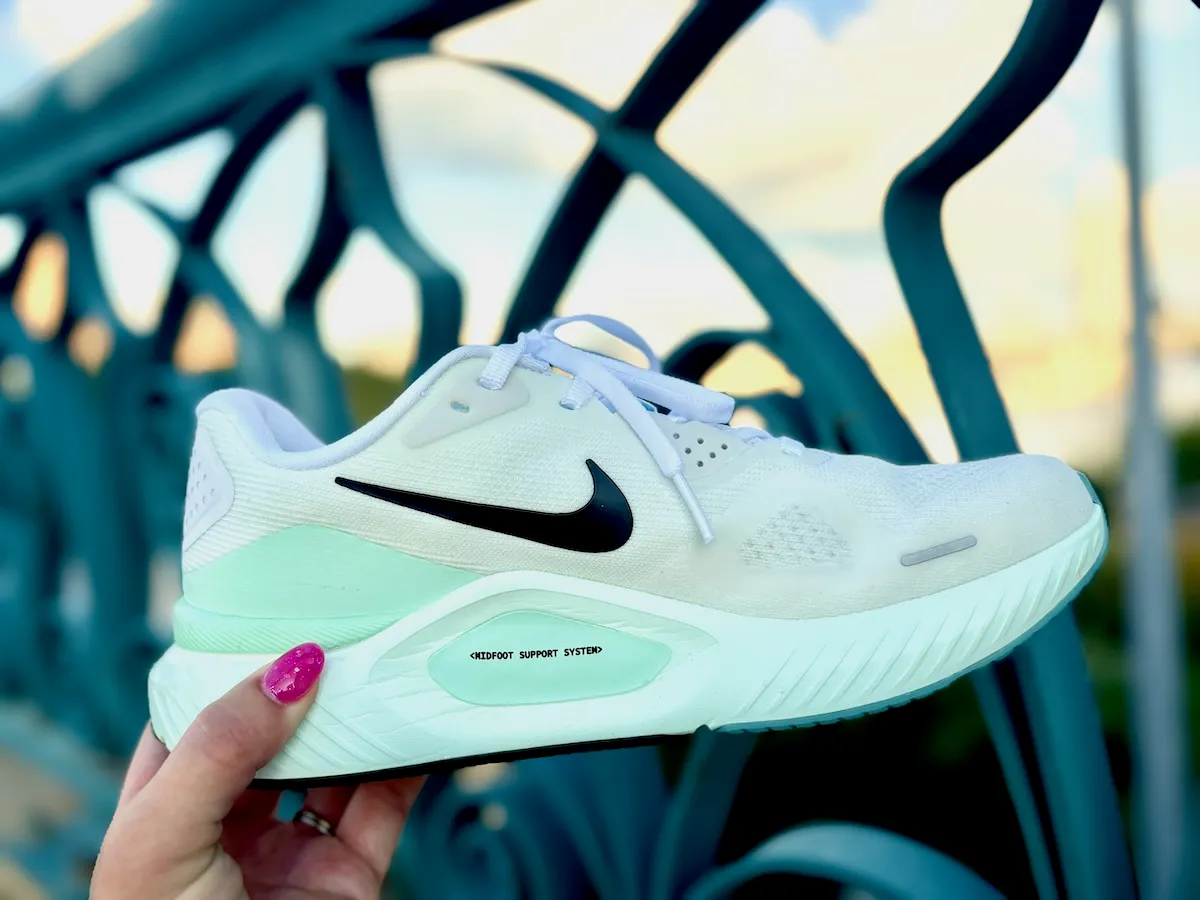 In terms of support, Nike has shifted away from rigid posts and instead uses its Midfoot Support System, which wraps the foot in two areas; the lateral rear heel and the medial midfoot. This delivers guidance and stability without ever feeling overbearing.
In terms of support, Nike has shifted away from rigid posts and instead uses its Midfoot Support System, which wraps the foot in two areas; the lateral rear heel and the medial midfoot. This delivers guidance and stability without ever feeling overbearing.
And you’ll appreciate that support, because the Structure 26 carries its highest stack height to date—38 mm in the heel with a 10mm drop.
- Weight: 11.3 oz Men’s, 9.2 oz Women’s
- Stack Height: 38mm
- Heel Drop: 10 mm
- Available in 6 Colors
- Available in wide
- Available on nike.com for $145
- Checkout our full review of the Nike Structure 26 >>
👉Adidas Duramo SL 2
Utilizing their stable frame, you’ll find your foot less likely to fall inward. While you will still enjoy the benefit of the full length LIGHTMOTION foam midsole to provide both responsiveness and cushion.
This is not a plush cushion due to the nature of a stability shoe, but it’s comfortable.
It has a lightweight upper mesh that has just enough padding to provide a comfortable ride without your feet overheating.
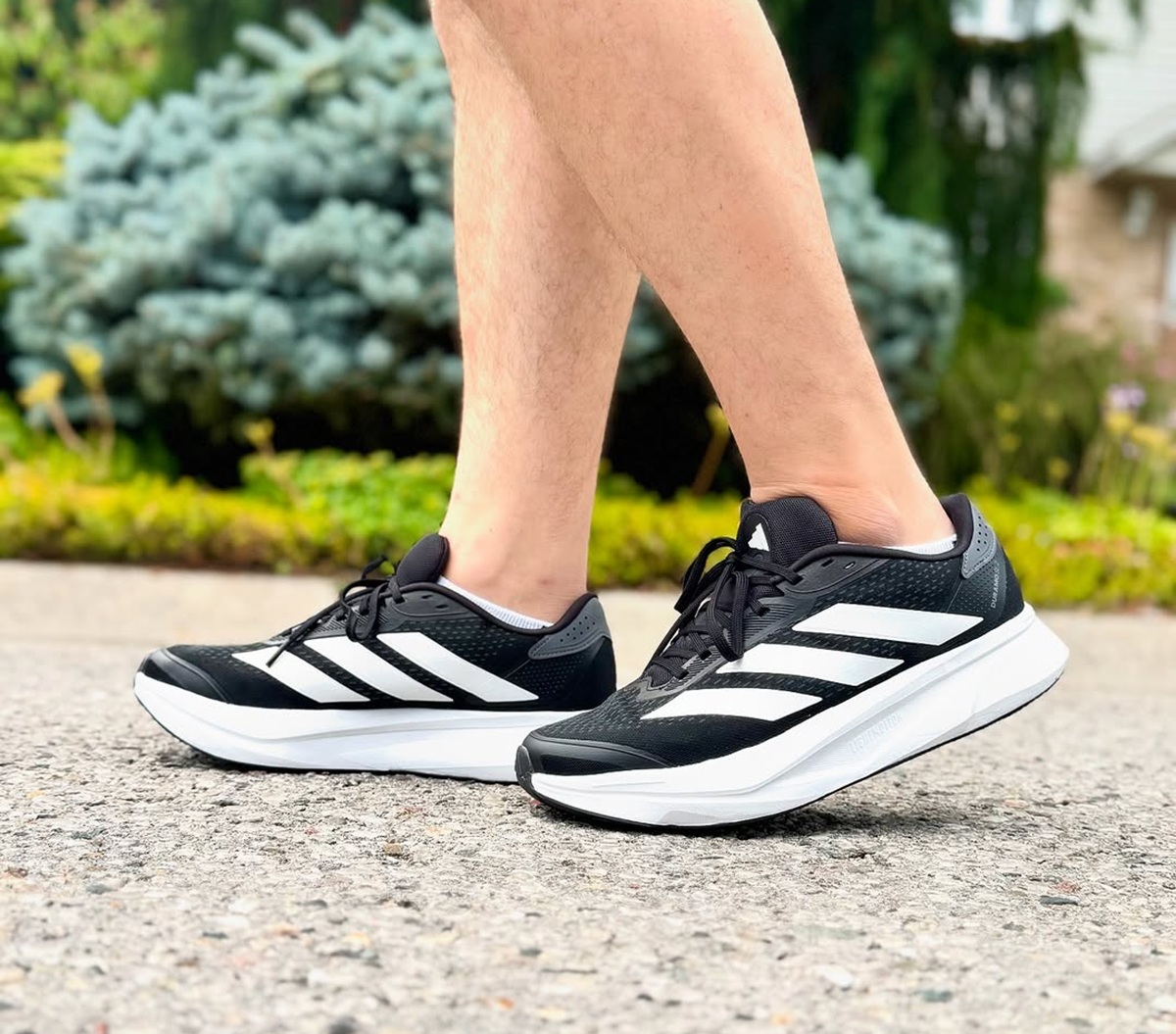
It’s durable outsole made from Adiwear materials will grip whatever terrain you’re running on, especially pavement and track.
- Weight: 8.7 oz Women’s, 10.3 oz Men’s
- Heel drop: 8 mm
- Available in 5 colors
- Not available in wide
- Available from Adidas.com for $70
Neutral Running Shoe
👉Nike Pegasus 41
The Nike Pegasus has all the bells and whistles that a runner could ask for: just the right amount of cushion in midsole for maximum comfort, durable rubber outsole to withstand, and a breathable mesh upper to keep your feet feeling fresh and dry.
But let’s get real for a second. The Nike Pegasus isn’t just a pretty shoe. It’s got substance too, with a firm heel counter that keeps your foot locked in place and a molded foam insole that provides extra support for those long runs.
This is a good option for your easy weekday runs or for the support of a marathon training run.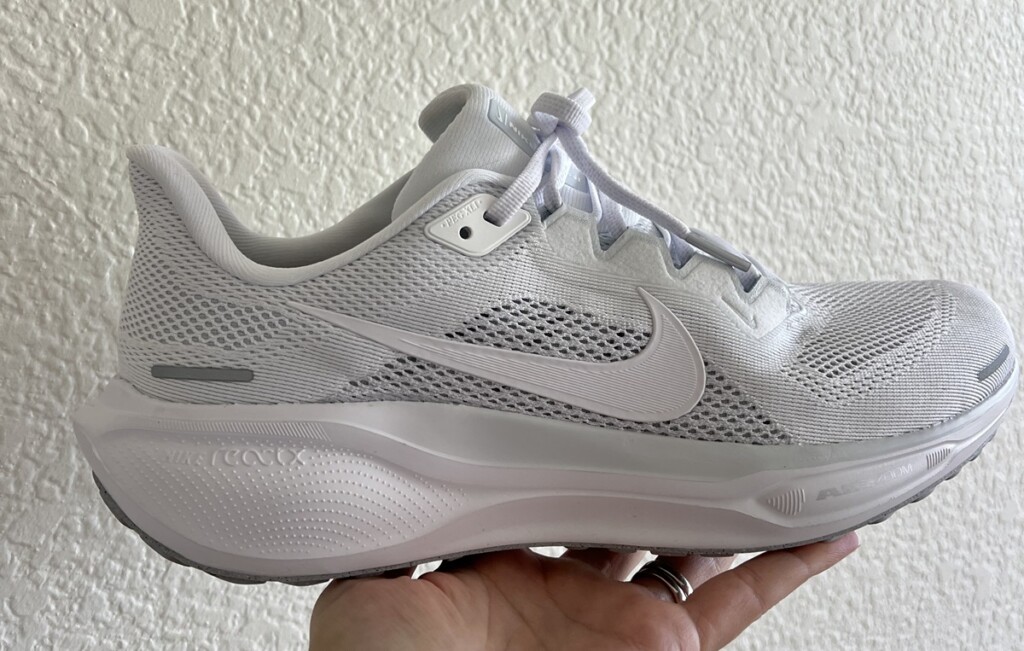 This is definitely a shoe that I like for those weekday training runs. Not over built, just enough cushion and a little roomier than other Nike’s.
This is definitely a shoe that I like for those weekday training runs. Not over built, just enough cushion and a little roomier than other Nike’s.
- Weight: 10.4 oz Men’s, 8.6 oz Women’s
- Heel drop: 10mm
- Available in 16 colors
- Available in extra wide
- Find it here on Nike.com for $140, so you can enjoy their 30 day trial policy!
- Check out our full review of the Nike Pegasus 41 here >>
👉Adidas Supernova Rise
If you already know that Adidas is a great fit for you then, you’re going to find the Supernova Rise is an everyday trainer that will get you through a lot of miles. While this is absolutely a great cushioned shoe, it’s not what we would consider a max cushion when comparing to other shoes on the market.
This is not a stability shoe, but can certainly help some with pronation.
they’ve included a new super foam called the Dreamstrike+ and second they’ve also added a Support Rod System. Technically the Supernova Solution (Coming 2024) will be the stability version of the Rise, but anytime we’re adding rods there’s some stability being implemented.
 An option that would be good for those who want one shoe for daily training through speed sessions.
An option that would be good for those who want one shoe for daily training through speed sessions.
- Weight: 8.1 oz Women’s, 9.7 oz Men’s
- Heel drop: 10mm
- Not available in wide
- Available in 6 colors
- Available through Adidas and Zappos for $140
- Check out our full review of the Adidas Supernova Rise 2 here >>
Cushioned Running Shoe
👉Nike Vomero 18
While it looks like a beast of a shoe, I can guarantee that it does not feel heavy or clunky underfoot.
The top layer ZoomX foam is a PEBA foam, meaning that it’s lighter and has more energy return. Traditionally PEBAX is not as durable, meaning less mileage before a shoe wears out, but they’re layering it over top of their ReactX foam.
The pods around the outsole are there to help with stabitliy and a smoother heel to to transition.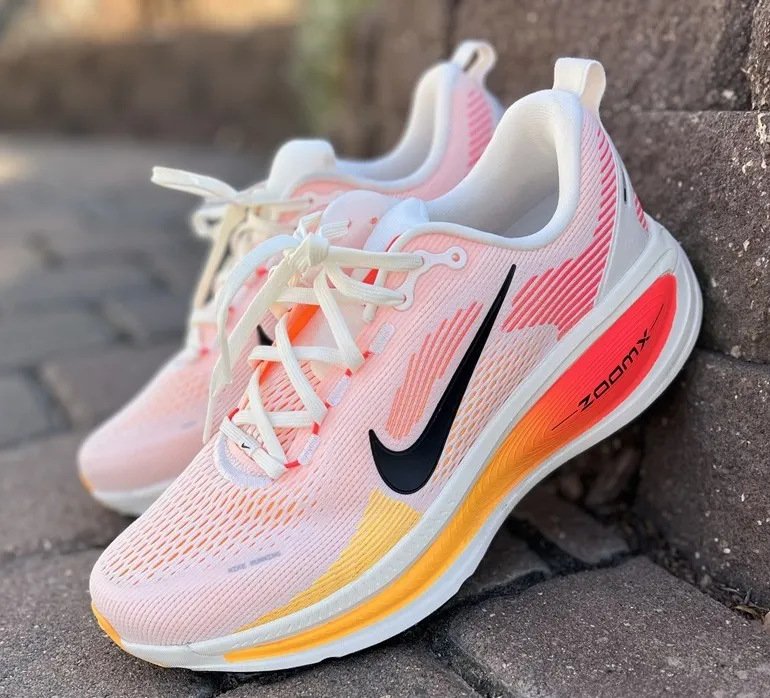 After our testing, the Nike Vomero 18 is going to be a max cushioned trainer for the middle of the pack and back to truly enjoy your easy days and long runs.
After our testing, the Nike Vomero 18 is going to be a max cushioned trainer for the middle of the pack and back to truly enjoy your easy days and long runs.
- Weight: 9.3 oz women’s, 11.5 oz men’s
- Heel drop: 10mm
- 6 colors available
- Not available in Wide
- Available at Nike.com $150
- Read our full review of the Nike Vomero 18 here >>
👉Adidas Evo SL
This is going to be the perfect shoe to carry you through long runs, while still allowing you to pick up the pace for half and even full marathon miles.
You’re not going to find all the fancy bells and whistles packed into the midsole, just some nice foam underfoot.
Lighstrike Pro is their top of the line foam. It’s the lightest with the best energy return and we’re finding it here in a $150 daily trainer, that’s fairly unusual.
The Adidas EVO SL is not as bouncy as a carbon plated shoe and not as soft as a daily trainer. It’s a blend right in the middle that allows for that energy return, but if you’re used to something like the Nimbus or NB 1080 that are super soft it could feel firm.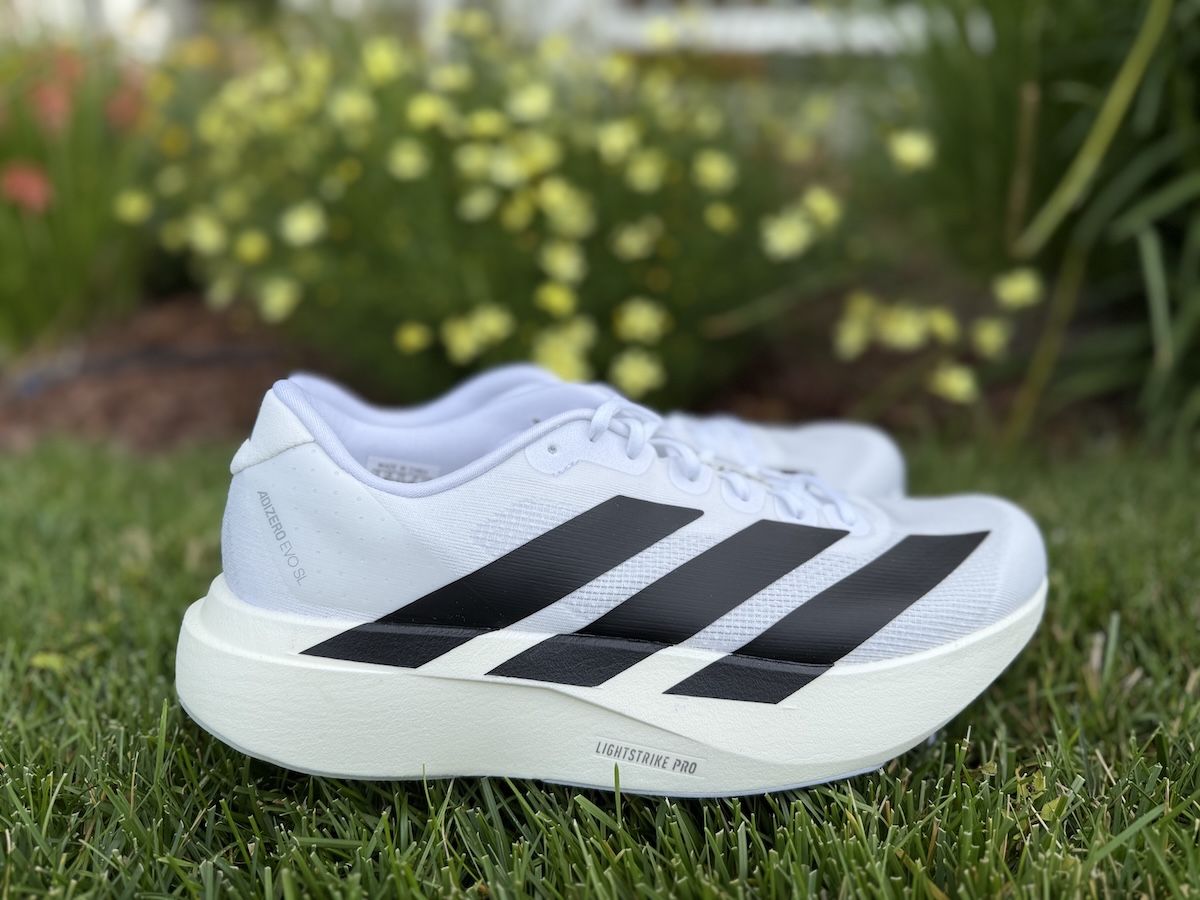
While we’re not reaching for this shoe on the days we want to do 7:00min repeats, we did enjoy it on longer miles where we wanted to put in some pick ups.
And in general, a lightweight shoe, with energy return on a long run is a really fabulous thing for the legs no matter the pace.
- Weight: 6.6 oz Women’s, 7.9 oz Men’s
- Heel drop: 6 mm
- Available in a whole lot of colors
- Available in wide
- Available now on adidas.com for $150
- Check out our full review of the Adidas Evo SL here >>
Carbon Fiber Plate Shoes
Are they cool new technology, yes. Do they last as long as your other shoes nope.
So if you want to test these out use them for speed work and then race day! I don’t usually do a full write up on these shoes, but with Adidas and Nike running shoes they’ve become a HUGE part of the brand.
👉Nike ZoomX VaporFly 4
This shoe is great for runners chasing PRs, those who are looking for an extra pop on race day, and anyone who loved the Vaporfly 3 but wanted something even lighter and more aggressive.
In our opinion, it is best for the half-marathon distance and below. However, you could get away with wearing it for the marathon.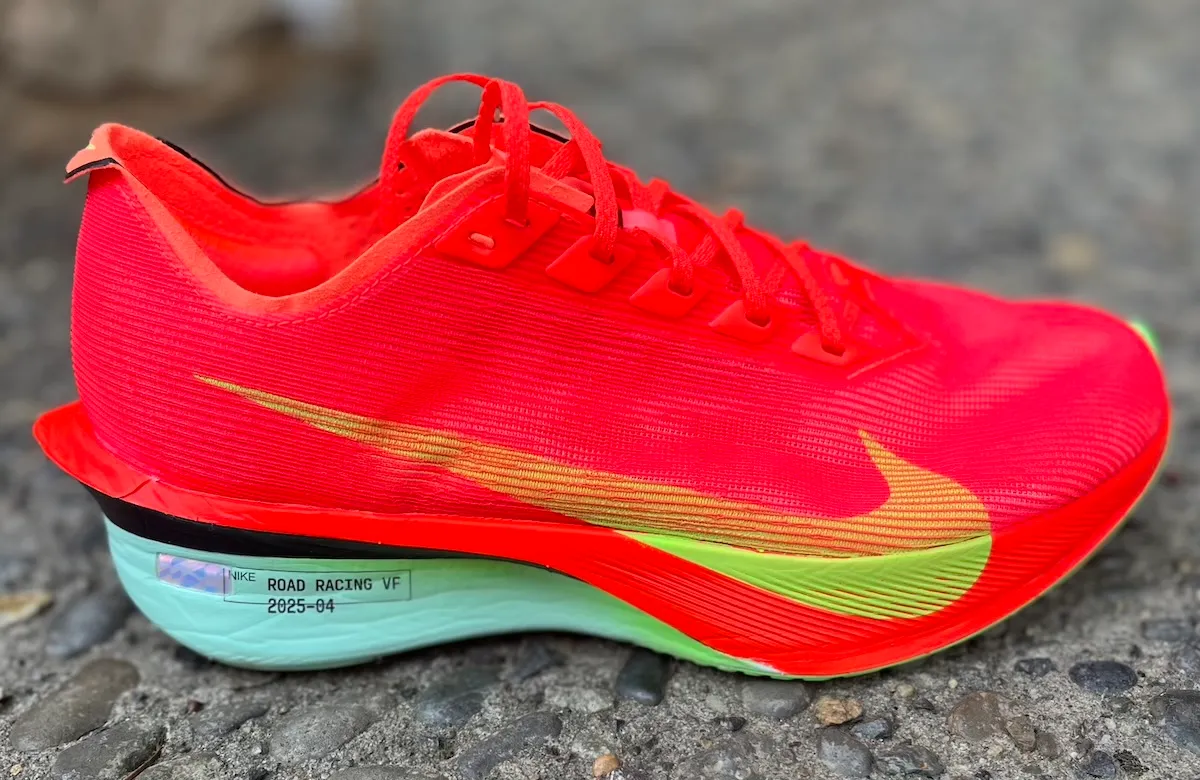 The Vaporfly has been interesting over the years because it’s not unusual for one person to love a model an someone else to love the previous model. In testing the 3, I was frustrated with the outsole and it looks like that hasn’t had much of an update here. So durability is still a concern.
The Vaporfly has been interesting over the years because it’s not unusual for one person to love a model an someone else to love the previous model. In testing the 3, I was frustrated with the outsole and it looks like that hasn’t had much of an update here. So durability is still a concern.
That being said the 4 is fast and light and another iteration of speed. It’s always had the feeling of running on rails and being narrow, that continues here and is maybe even a smidge more noticeable.
- Weight: 6.7 oz Men’s, 5.3 oz Women’s (Unisex sizing)
- Heel Drop: 6 mm
- Available in 3 colors
- Not available in wide
- Available on Nike.com $260
- Check out our full review of the Nike Vaporfly 4 here >>
And more importantly a comparison of the Nike Alphafly vs Vaporfly. Which is the right race shoe for you?
👉Adidias Adizero Pro
This shoe is great for serious, efficient runners chasing PRs and racing fast marathons. It’s a serious price tag for a serious shoe that will absolutely benefit the front of the pack.
We thought that the ride feels comfortable underfoot with great forefoot pop, added bounce from the updated stack, and standout traction, making it the kind of shoe you save for race day when every second matters.
Unfortunately, after our testing, it’s only going to be at its prime for 1 long run and marathon race day.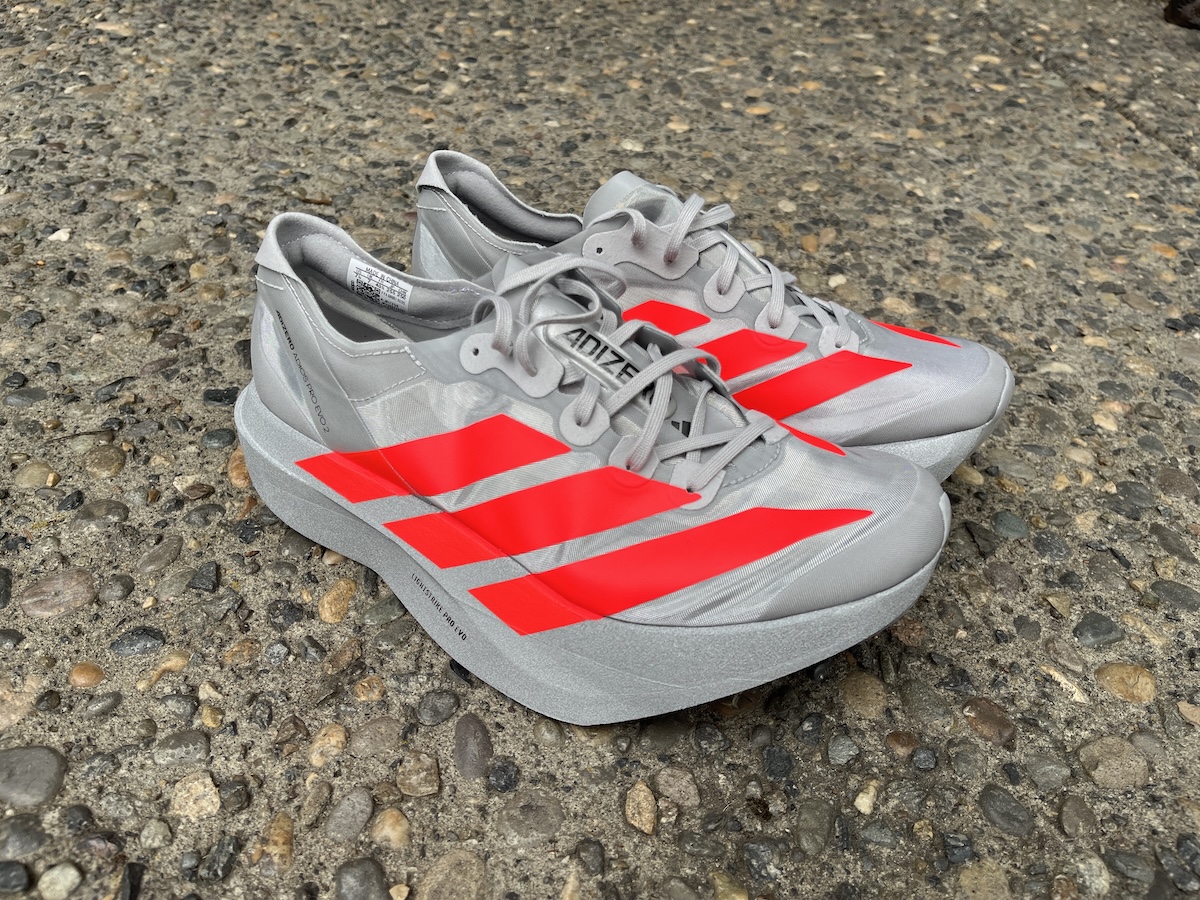
Overall, it’s a shoe that comes alive when you’re pushing the pace and rewards efficient, fast runners. You likely won’t feel the true benefits of this shoe at paces slower than 7 min/pace.
- Weight: 4.86 oz
- Heel Drop: 3 mm
- Limited launch colors (more colors coming Fall)
- Not available in wide
- Available from Adidas.com for $500 but is currently VERY HARD TO FIND
- Check out our full review of the Adidas Adizero Pro Evo here >>
Trail Running Shoes
👉Nike Wildhorse 10
Built for mid- to long-distance trail runs over dry or moderately technical terrain, this shoe continues to build Nike’s trail foundation while integrating key updates—most notably the new ReactX foam midsole, which gives it a fresh, responsive feel.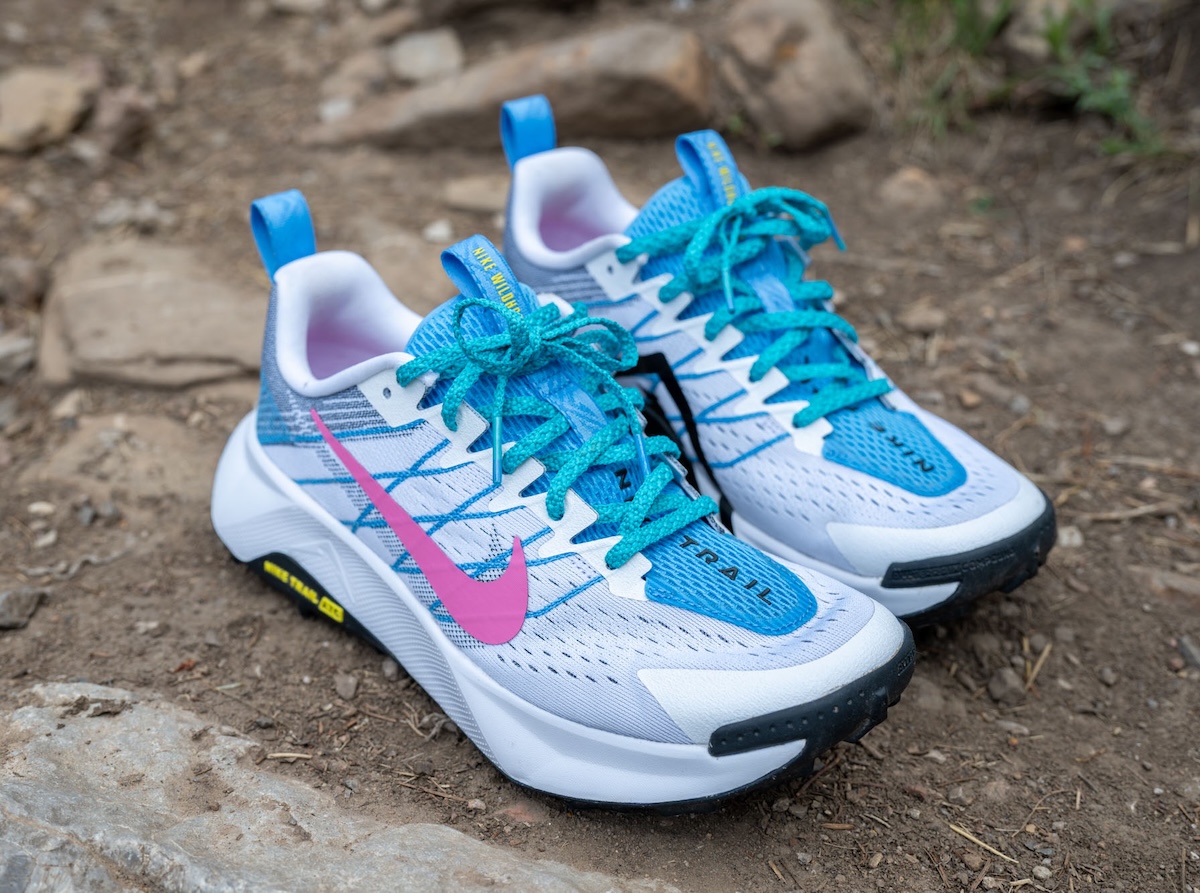 The Nike Wildhorse 10 is a trail shoe that leans into comfort, cushioning, and thoughtful construction. It excels at longer runs over mild to moderate terrain and does a good job of keeping my feet feeling fresh over the miles.
The Nike Wildhorse 10 is a trail shoe that leans into comfort, cushioning, and thoughtful construction. It excels at longer runs over mild to moderate terrain and does a good job of keeping my feet feeling fresh over the miles.
While it may not be the best choice for highly technical terrain or runners who prefer a close-to-the-ground ride, it’s ideal for those big weekend miles, recovery runs on the trail, or any outing where you want your feet to feel good from start to finish.
- Weight: 8.6oz Women’s
- Heel Drop: 9.5mm
- Availalbe in 3 colors
- Not available in wide
- Available on Nike.com for $165
- Check out our full review of the Nike Wildhorse 10 here >>
👉Adidas TERREX Agravic Ultra
This is a shoe with really mixed reviews. Out of the box it feels really stiff and I’ve run in to this with past trail shoes, so I personally don’t give them a whole lot of time. That being said, it also means they are really durable and keep your foot secure!
Over 50% of the shoe is made from recycled materials, which is always a bonus when adding to our collection and reducing our footprint. Having used many shoes with recycled materials that is not why this shoe is stiff, it’s simply the way they’ve chosen to design it.
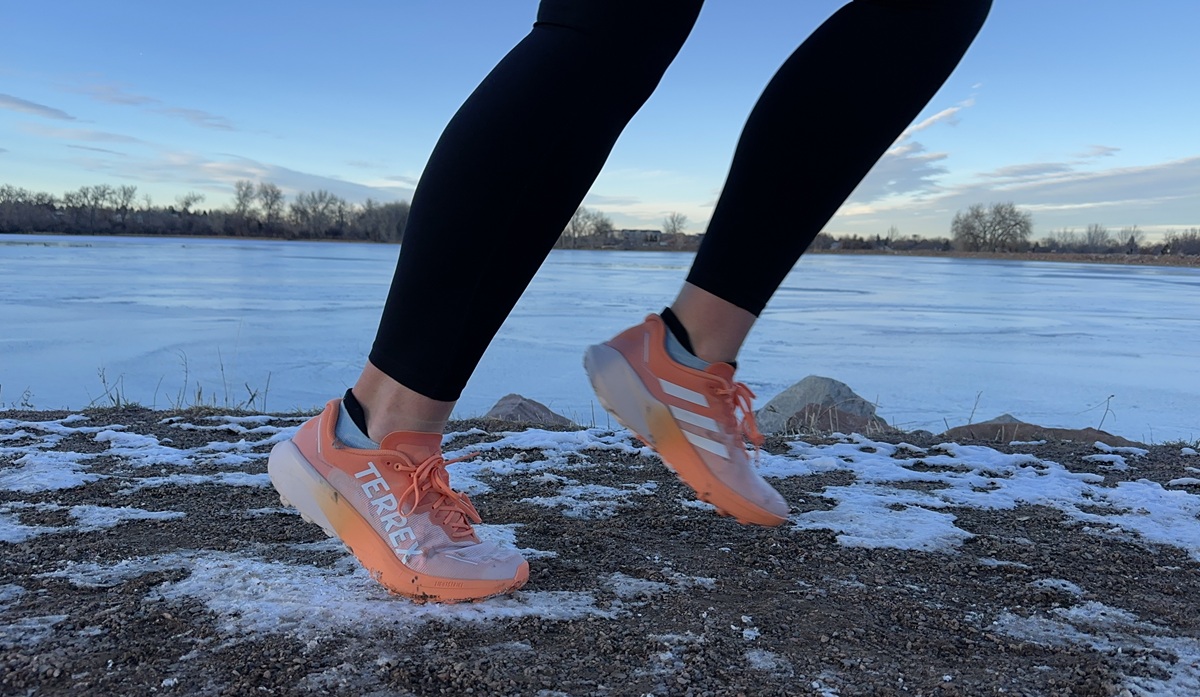
Underfoot you’ll be getting the foam similar to the Ultralight boost and of course some great lugs for plenty of traction.
- Weight: 10.5 oz men’s, 9 oz women’s
- Heel drop: 8mm
- Available in 3 colors
- Not available in wide
- Available from Adidas.com for $130
Is Nike Better Than Adidas?
Nike has been dominating the elite running world for many years, so the question is do they have shoes for the rest of us?
100% they have a variety of shoes for different runners. And while you might see far more elite runners in Nike gear, New Balance is an equally great running shoe for most of us. The shoes worn by elite runners are often custom made, specific to a team or sponsored.
But Adidas is also huge in the sponsorship game. You may have noticed them at the Track World Championships or on the Tin Man Elite training group.
It’s really a matter of fit and slightly different technology from each brand as to which you’ll like better.
For many years I was not a fan of Nike, but about 5 years ago I discovered a Nike shoe that has become one of my go-to shoes. I’ve had 8 pairs now, you’ll see it listed in the comparisons! Same can be said of Adidas running shoes which previously lacked the cushion I like in distance shoes.
I’ve worn both brands and will add some personal thoughts, along with comparable models from each brand at the end.
Adidas vs Nike Running Shoe Feature Comparison
Both brands have been around for a very long time and are leaders in running shoe design. They both offer various technologies to aid with comfort, support, stability, and cushion.
They differ in both fit and technology.
Here is a breakdown of each shoe based on the components buyers need to consider when purchasing a running shoe.
It’s gonna get a little TECHY…so you can just skip on down to the specific model comparison if you want, but personally if I’m shelling out $150 for shoes, I kinda want to know why.
Durability
The lifespan of shoes from both companies is fairly comparable. Though I kind of dislike that they give a 200 mile range, that’s massive. Assume that for heavier runners shoes breakdown faster and those running on the treadmill may get more life.
- Adidas shoes have a life expectancy ranging from 300 to 500 miles, or three to six months, depending on your monthly mileage.
- Nike’s Vapor Fly is only going to give you about 200 miles, but most shoes are in the 300-500 mile range
Determining when to replace running shoes, of course, all depends on your gait, weight, and whether you run mostly on trail or road.
Breathability
Adidas focuses on a mesh upper for ventilation. In general, you want to avoid a Knit Upper if you’ll be wearing your running shoes in super hot weather as it will trap more heat.
Nike has transitioned to FlyKnit for many of its shoes. It’s a more form fitted style, which means some areas are designed to be thinner and breathable while others are thicker for support. But as noted above they may not be quiet as breezy.
Across MOST running shoes, the only time you now won’t find them to be breathable is if you get to Gore-Tex shoes that are designed to be water repellent or water resistant.
Fit
Nike running shoes are often reported to run small.
Adidas shoes are generally reported to run true to size.
But NEITHER brand is good for a wider foot. They do have some wide models, but the average shoe is going to be a little slimmer fit. Which also means they do not have a large toe box like an Altra Running shoe.
 This is an older, yet still very USEFUL graphic from the Huffington Post.
This is an older, yet still very USEFUL graphic from the Huffington Post.
I forget we may not all know the lingo when talking about different components of the shoe and why they matter.
Cushioning
Adidas is now well known for their Boost cushioning, which is in the name of so many shoes. Their goal was to improve upon traditional EVA foam, by creating something that provided both cushion and responsiveness.
Meaning that you don’t sink in to the shoe losing the forward momentum. Since 2013 Boost foam has been their primary cushion.

Nike started putting air in their shoes back in 1977 to improve cushioning.
“Nike Air technology consists of pressurized air inside a tough yet flexible bag and provides more spring without compromising the structure.”
And since the 90’s they’ve been recycling waste material from production in to new shoes. They continue to look at this sustainability in developing new shoes.
Currently the React Foam is their big winner. It’s truly a great soft and light cushion.
Stability
Adidas utilizes a denser midsole and more heel lock to help keep your foot from overpronating.
Nike does say their stability shoes are slightly wider and also designed with a curve that will help with heel to toe transitions.
As you may know, I’m not a huge fan of stability shoes for most runners. I am not finding a big difference in brands, they are all focused on preventing that foot roll and often feel more rigid, even with a decent cushion.
Affordability
Adidas prices range between $100 to $140, while Nike start at a slightly higher price at $120 to $180.
The most popular models for both brands are priced toward the higher range. Carbon fiber shoes and often trail shoes will go beyond those rates, like the Vapor Fly which is over $200.
You’ll notice that every brand offers a range and this is indeed due to a difference in technology and where they sell the shoe. They know that the big box store can sell the shoe with less in it, while the local running store needs to be best for dedicated runners.
More About Adidas Running
Did you know Adidas was formed by one brother…and the other created Puma?! Look out for those family feuds!
The iconic 3 stripes appeared in 1949. On what is now considered a classic casual Adidas shoe, pretty impressive that a style has lasted so long and is still used by many soccer players.
In the 60’s Adidas started to get some attention in the running world. But again in the 80’s Adidas introduced a soccer cleat that is still used today!
The 2000’s are when they really started to hit their stride and have continued developing new technologies to make their running shoes some of the most loved.
More About Nike Running
Is there anyone who doesn’t know the story of Nike yet?? The brand actually started in 1964 as Blue Ribbon Sports and didn’t take on the name of Nike the Greek Goddess until 1971.
If you haven’t read Shoe Dog by Phil Knight, it’s a wonderful book that gives you so much insight to the building of a company and a brand.
I fully understand not everyone loves Nike due to many of the practices we’ve seen with their athletes. I’m just here to provide details about the gear, you make those judgements.
In 1972, the Nike Waffle Racer was handed out at the Olympics and things really started to take off. One of these original pairs of shoes recently sold for almost $500,000!
From there they have continued to inovate and consistently produce new models of shoes for a variety of sports.
Nike has also dominated the marketing game.
How to Choose Nike or Adidas?
Nike and Adidas are two extremely well known running shoe brands, but more important than brand is the fit of the shoe.
Your gait and feet will change over time and you may need to change shoes.
This is also why I recommend rotating through several pairs of shoes at once.
And remember, just because these are two of the most well known brands on the market, there are still plenty of other shoe brands to select from if neither New Balance nor Nike has the right shoe for you.
Keep in mind that shoe design can change, even with the same model, so always assess how the shoe fits every time you replace a pair.
What to read next?
Other ways to connect with Amanda
Instagram Daily Fun: RunToTheFinish
Facebook Community Chatter: RunToTheFinish
Sign Up to Receive a Weekly Newsletter with Top Running Tips and Laughs



 Decoding Your Running Gel: What Those Labels Really Mean
Decoding Your Running Gel: What Those Labels Really Mean